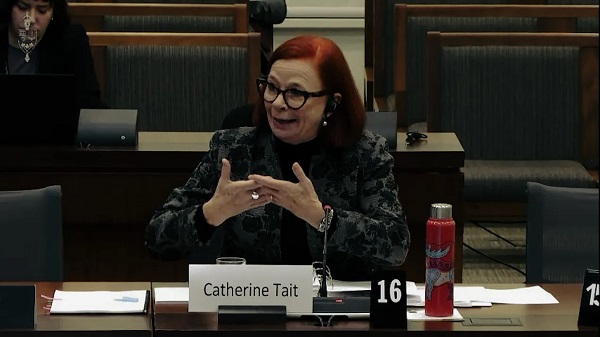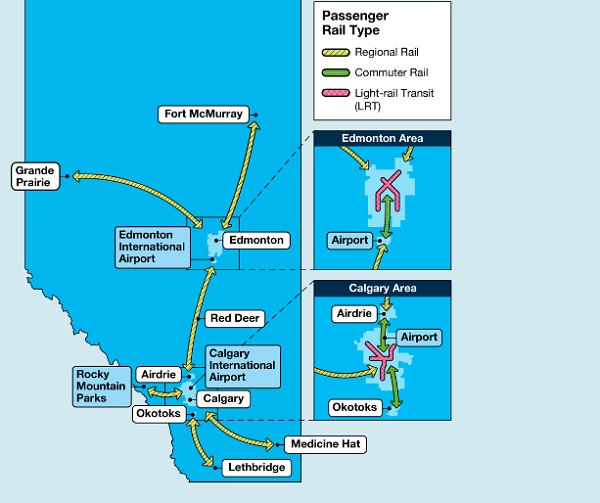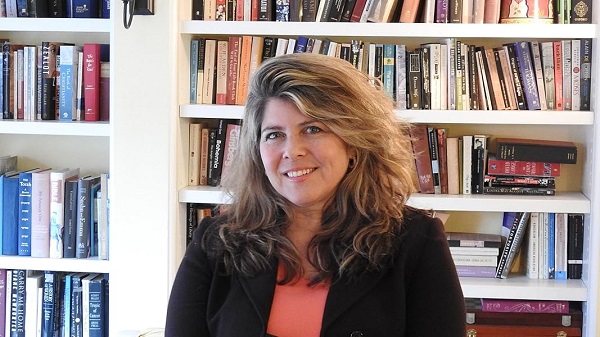Crime
‘Do You Hear Yourself?’: JD Vance Stunned After Raddatz Minimizes Migrant Gang Takeover Of Apartment Complexes
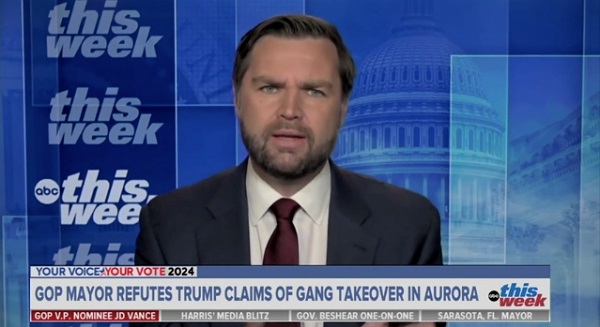
From the Daily Caller News Foundation
By Hailey Gomez
Republican Ohio Sen. J.D. Vance appeared shocked Sunday on ABC News when co-host Martha Raddatz interrupted him mid-statement and attempted to downplay Venezuelan gangs’ takeover of Colorado apartment complexes.
The Tren de Aragua gang made U.S. headlines in September after officials confirmed ten members were involved in an investigation into a string of alleged criminal incidents at an Aurora, Colorado apartment complex, according to FOX 31. On ABC’s “This Week,” Raddatz pressed Vance on former President Donald Trump’s response, noting Trump claimed the city had been “invaded and conquered” by migrants, while the mayor called the statement “grossly exaggerated.”
“Well, Martha, you just said the mayor said they were exaggerated. That means that there’s gotta be some element of truth here,” Vance began. “Of course, President Trump was actually in Aurora, Colorado talking to people on the ground, and what we’re hearing is people are terrified by what has happened with some of these Venezuelan gangs — ”
“Senator Vance, I’m going to stop you because I know exactly what happened. I’m going to stop you. The incidents were limited to a handful of apartment complexes and the mayor said, ‘Our dedicated police officers have acted on those concerns.’ A handful of problems,” Raddatz said.
Vance pushed back on Raddatz, questioning her issue with Trump and her refusal to acknowledge that U.S. apartment complexes are “being taken over by violent gangs.”
“Only, Martha? Do you hear yourself? Only a handful of apartment complexes were taken over by Venezuelan gangs, and Donald Trump is the problem, not Kamala Harris’ open border? Americans are so fed up with what’s going on, and they have every right to be,” Vance responded. “I really find this exchange, Martha, sort of interesting because you seem to be more focused with nitpicking everything that Donald Trump has said, rather than acknowledging that apartment complexes in the United States of America are being taken over by violent gangs.”
WATCH:
“I worry so much more about that problem than anything else here. We’ve got to get American communities in a safe space again, and unfortunately, when you let people in by the millions — most of whom are unvetted, most of whom you don’t know who they really are — you’re going to have problems like this,” Vance added. “Kamala Harris — 94 executive orders that undid Donald Trump’s successful border policies, we knew this stuff would happen. They bragged about opening the border, and now we have the consequences and we’re living with it. We can do so much better, but frankly we’re not going to do better, Martha, unless Donald Trump calls this stuff out.”
The Venezuelan gang, which reportedly began as a prison gang in 2014 in the northern Venezuelan state of Aragua, has rapidly grown into one of the country’s largest criminal organizations. In mid-September, the Aurora Police Department confirmed that ten gang members in the area had been living in the city “and committing acts of violence against members of the migrant community,” according to FOX 31.
In response, property management company CBZ Management allegedly shut down three locations in the city — Edge at Lowry, Fitzsimons Place, and Whispering Pines — due to being “taken over” by the gang, according to the Denver Post. Charges against the arrested group include felony menacing, assault, motor vehicle theft and numerous shootings.
While speaking at a rally in Aurora on Friday, Trump addressed the ongoing migrant issue with supporters, reflecting on how the gang has been “taking over” the city.
“I will rescue Aurora and every town that has been invaded and conquered,” Trump stated.
However, Republican Aurora Mayor Mike Coffman released a statement a day earlier, claiming the “reality” is that concerns over gang activity in the city and state have been “grossly exaggerated and have unfairly hurt the city’s identity and sense of safety.”
Featured Image: Screenshot/ABC News/”This Week”
Crime
Joe Biden pardons son Hunter for any crimes committed in the last 10 years!
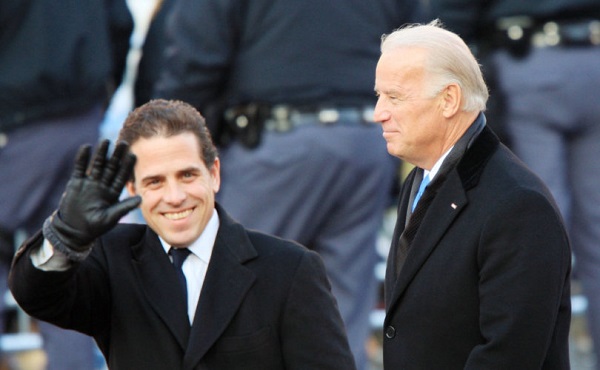
From LifeSiteNews
Outgoing President Joe Biden granted his son and business partner Hunter Biden a sweeping pardon for any federal crimes he may have committed, known or unknown, from 2014 all the way through last month.
Outgoing President Joe Biden issued a sweeping pardon Sunday evening to his troubled son Hunter for any known or unknown crimes committed over the span of a decade after repeatedly denying he would do so.
For years, the Biden family has been dogged by allegations of personal corruption and influence peddling. During the Obama years, the former vice president infamously boasted that he facilitated the firing of Ukrainian Prosecutor General Viktor Shokin, who had been investigating energy company Burisma Holdings (on whose board Hunter served despite lacking experience in the energy industry), by threatening to withhold a billion-dollar loan from the U.S. to Ukraine. Defenders claim that the move was about Shokin not prosecuting corruption aggressively enough, but critics suggest it was about Shokin potentially getting too close to Burisma and, by extension, Hunter.
In the months before the 2020 presidential election, the New York Post released a series of bombshell reports about a laptop belonging to Hunter that was delivered to and abandoned at a Delaware computer repair shop and contained scores of emails and texts detailing the Biden family’s international business activities, which exploited Joe’s political office by offering access to the highest levels of the federal government and the various worldwide connections made through that office. The story was initially maligned as “disinformation” but eventually acknowledged as real long after Biden was safely elected.
Earlier this year, Hunter was convicted on multiple felony counts for tax evasion and illegally purchasing a gun while under the influence of drugs, with sentencing slated for sometime this month. His father rendered sentencing moot over the weekend, however, by formally granting Hunter a “Full and Unconditional Pardon” for federal offenses “which he has committed or may have committed or taken part in during the period from January 1, 2014 through December 1, 2024.”
The president insisted that he kept his word to “not interfere with the Justice Department’s decision-making,” but maintained that Hunter “was singled out only because he is my son – and that is wrong. There has been an effort to break Hunter – who has been 5 1/2 years sober, even in the face of unrelenting attacks and selective prosecution. In trying to break Hunter, they’ve tried to break me – and there’s no reason to believe it will stop here. Enough is enough.”
The move, which not only saves Hunter from whatever sentence he might have received but also helps protect the president himself from future convictions against the son leading to legal jeopardy for the father, directly contradicts numerous denials by Biden and White House representatives that Hunter would be pardoned.
In a June ABC News interview, Biden answered “yes” that he would accept the jury verdict and that he had ruled out pardoning his son. “I’m extremely proud of my son Hunter. He has overcome an addiction. He is one of the brightest, most decent men I know. I abide by the jury decision. I will do that, and I will not pardon him,” he said at a press conference a week later. White House Press Secretary Karine Jean-Pierre repeatedly said “no” to the pardon question, including last month after Donald Trump won his return to the presidency.
As recently as November 26, Senior Deputy Press Secretary Andrew Bates reiterated Biden’s past denials on the subject, stating, “The president has spoken to this (…) I don’t have anything idea (sic) to add to what he’s said already.”
“Does the Pardon given by Joe to Hunter include the J-6 Hostages, who have now been imprisoned for years?” Trump reacted on Truth Social. “Such an abuse and miscarriage of Justice!”
“The pardon power was written in absolute terms, and a president can even, in my view, pardon himself. However, what is constitutional is not necessarily ethical or right,” George Washington University law professor Jonathan Turley wrote. “This is one of the most disgraceful pardons even in the checkered history of presidential pardons. President Biden has lied to cover up a corruption scandal that reportedly brought his family millions in raw influence peddling. His portrayal of his son as a victim stands in sharp contrast to the sense of immunity and power conveyed by Hunter in his dealings.”
Crime
What did Canada Ever Do to Draw Trump Tariff on Immigration, You Ask? Plenty

By Todd Bensman as published by The Daily Wire
Much US national security and public safety damage from: an historic Canadian legal immigrant importation program and making Mexican travel visa-free.
President-elect Donald Trump bloodied Mexico and Canada with diplomatic buckshot this week by writing that, on his first day in office, he’ll levy devastating 25-percent trade tariffs on those two U.S. neighbors if they fail to crack down on illegal immigration and drug trafficking.
Much public puzzlement has filled international media coverage over why Trump would single out Canada for punishment equal to that of the far guiltier Mexico.
“To compare us to Mexico is the most insulting thing I’ve ever heard from our friends and closest allies, the United States of America,” Ontario Premier Doug Ford said. “I found his comments unfair. I found them insulting. It’s like a family member stabbing you right in the heart.”
“We shouldn’t confuse the Mexican border with the Canadian border,” Canadian Industry Minister Francois-Philippe Champagne said.
But this narrative seems intended to deflect public acknowledgement of what the liberal progressive government of Justin Trudeau did do to draw Trump’s tariff ire. In terms of immigration policy, the Canadian offenses are indeed much different from Mexico’s opened super-highway mass migration wave-throughs during the Biden-Harris years. But what Canada has done, arguably, damaged U.S. national security and public safety interests in harmful ways that media outlets on both sides rarely report.
Canada’s massive legal immigration program as a U.S. national security threat

Much of the damage arises from an historic Canadian legal immigrant importation program of unprecedented scope. Since the program’s 2021 implementation, the Great White North has imported some 1.5 million foreign national workers (400,000+ per year for the nation of 38 million) from dozens of developing nations and hundreds of thousands more foreign students in just 2023 – the third record-breaking year of those.
Why are those programs a U.S. problem? Because a spiking number of foreign nationals are apparently abusing the Canadian programs as a Lilly pad from which to illegally enter the United States between northern border land ports of entry, among them proven threats to U.S. national security and public safety.
Why this traffic leaking into the United States is a problem – even though the total numbers illegally entering from Canada are small relative to those crossing from Mexico – arises from the fact that many hail from Muslim-majority nations and have, Canadian media reports, fueled a spate of terrorism and anti-Semitic attacks throughout Canada. As well, far too many of the Mexicans Canada has allowed in turned out to be cartel drug traffickers and killers.
Those kinds of criminals are crossing the U.S. northern border in increasing numbers due to Canadian policies that Canada could address if it wanted to.
Consider that U.S. Border Patrol apprehensions in the brush between U.S.-Canada land ports of entry jumped from 2,238 in FY2022 to 23,721 in FY2024, neatly coinciding with Trudeau’s mass legal immigration programs.
Among those crossing in illegally from Canada, for instance, were 15,827 Indian nationals in FY 2023 and 2024, 8,367 Mexicans, and 3,833 from unspecified countries listed only as “Other” on the U.S. Customs and Border Protection’s public statistics website.
A border-crossing terror plot foiled
Concern on both sides of the U.S.-Canada line has simmered for some years as Canadians saw the newcomers carry out terror plots, actual attacks, and probably some of the record-breaking nearly 6,000 antisemitic incidents Canada logged since the Israel-Hamas war broke out.
What’s been happening in Canada was obvious to many.
“Canada has become a hotbed of radicalization, fanaticism, and jihadism,” wrote Casey Babb, Senior Fellow with the Macdonald-Laurier Institute in Newsweek shortly after the arrest. “As un-Canadian as it sounds, Canada has a terrorism crisis on its hands and that should worry the United States for a whole host of reasons.”
Concern would reach an apogee in October 2024, when a joint U.S.-Canadian counterterrorism operation thwarted a plot by a Pakistani student on a Canadian visa to illegally cross the northern border to conduct an October 2024 massacre of Jews in New York.
Muhammad Shahzeb Khan, a 20-year-old Pakistani citizen legally issued a Canadian student visa in June 2023, now stands accused in U.S. federal court of plotting an illegal-smuggler-assisted northern border crossing to carry out a mass shooting of Jews in New York City to celebrate with blood the October 7 anniversary of the Hamas massacre in Israel. Khan hoped it would go down in history as “the largest U.S. attack since 9/11”.
“We are going to nyc (sic) to slaughter them” with AR-style rifles and hunting knives “so we can slit their throats,” Khan told an undercover FBI agent he believed to be a co-conspirator, according to an agent complaint. “Even if we don’t attack an event we could rack up easily a lot of Jews.”
His was among the record-breaking 400,000 foreign student visas Canada issued in 2023.
That alarming new terrorism prosecution in New York State should have been enough to renew Trump’s interest in turning diplomatic pressure onto Canadian Prime Minister Trudeau’s mass legal immigration policies and border security on its side.
But terrorists cannot be the only concern.
Mexican cartel killers and traffickers in Canada crossing too
The incoming Trump administration 2.0 will need to force resolution of another issue of U.S. public safety concern dating to an especially damaging 2016 Trudeau move that went unaddressed until only recently. Trudeau rescinded 2009 visa requirements on Mexican citizens and against the advice of his own government that Mexican criminals would abuse the policy to fly in at will and bedevil Canadian cities and northern American ones too.
That’s just what was happening again by early 2017. A sustained surge was underway of Mexican nationals who, unable to easily cross the southern border under Trump 1.0, were flying over the United States into Canada. They would claim Canadian asylum, then cross southward over the less tended northern U.S. border.
Among them were the predictable – and predicted – Mexican cartel operatives.
Leaked Canada Border Services Agency intelligence reports said Mexican “drug smugglers, human smugglers, recruiters, money launders and foot soldiers” were turning up in greater numbers than ever before. The cartels went to work building human smuggling networks to move other Mexicans south over the American border, just as they did all along the southern border.
In July 2017, Global News quoted published the intelligence reports saying the ultra-violent Sinaloa cartel had turned up in Canada to “facilitate travel to Canada by Mexicans with criminal records.” Others identified included La Familia Michoacana, Jalisco New Generation, and Los Zetas.
For instance, whereas the reports said 37 Mexicans linked to organized criminal groups had entered between 2012 and 2015, 65 involved in “serious crimes” were identified midway through just 2017, compared to 28 in 2015. By May 2019, at least 400 Mexican criminals connected to drug trafficking, including sicario hitmen, were plying their trades in Canada, at least half of them in Quebec, according to a May 24, 2019, report in the Toronto Sun and other Canadian media outlets.
All had entered through the Trudeau visa loophole for Mexicans.
By the end of 2019, Canada saw a 1,400 percent spike in the number of bogus Mexican refugee claims, the vast majority naturally rejected, and of associated detentions.
Canada finally about to face the music
Only in February 2024 did the Americans pressure the Canadians finally begin to roll back some – but not all — of its visa-free Mexicans policy, because the influx had clogged Canada’s asylum system with too many bogus claims and also sent too many Mexicans illegally over the U.S. border, which presented a politically terrible look as the 2024 presidential election campaign got underway. Now, only Mexicans who already hold a US visa or old Canadian one can travel visa-free, while most other Mexicans with neither will have to apply for a Canadian one.
But the damage that must be managed today is by now well baked into the cake.
From January to mid-October 2022, for instance, 7,698 Mexican asylum seekers took direct flights from Mexico City to Montreal, according to a November 2022 Canadian Press story. The paper quoted officials at nonprofit refugee assistance groups attesting that most fly to Canada because they found out Trudeau’s visa-free policy also got them government financial assistance while awaiting their mostly denied asylum applications.
In their October 2021 book, The Wolfpack: The Millennial Mobsters Who Brought Chaos and the Cartels to the Canadian Underworld, journalists Peter Edwards and Luis Najera established that the Sinaloa Cartel now has a foothold across eastern Canada, with “solid control of cocaine shipments in and out of Canada.” The Arellano Felix group has its foothold in Vancouver and in the state of Alberta.
The Zetas are in Canada “involved with temporary migrant workers”.
Asked in 2023 if Canada’s importance to Mexican organized crime had increased “in recent years,” co-author Luis Najera answered: “I would say it has increased since criminal cells moved up north to settle and expand operations here. It is also strategic to have groups operating north of the U.S. border, close to key places such as Chicago and New York, and without the scrutiny of the DEA and rival groups.”
Canada is not Mexico but its policies pose consequences for the United States. Any normal U.S. administration would put Canada on the hook for adjusting its policies and more robustly guarding its supposedly treasured neighboring ally, the United States, from harm. If punishing trade tariffs finally focus Canada’s attention on those policy-driven harms, let them last until Canada fixes what it recklessly broke.
-

 David Clinton2 days ago
David Clinton2 days agoWhat Happens When Ministries Go Rogue?
-

 Automotive2 days ago
Automotive2 days agoNorthvolt bankruptcy ominous sign for politicians’ EV gamble
-

 Crime2 days ago
Crime2 days agoWhat did Canada Ever Do to Draw Trump Tariff on Immigration, You Ask? Plenty
-
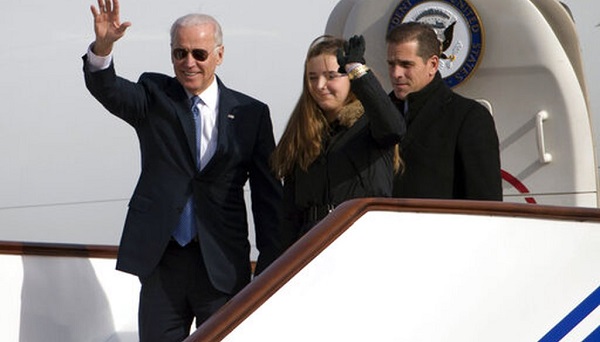
 Daily Caller2 days ago
Daily Caller2 days agoCNN’s Scott Jennings Says History Will Remember Biden As ‘Complete And Total Disgrace’ Over Hunter Pardoning
-

 Automotive2 days ago
Automotive2 days agoElectric-vehicle sales show modest spark
-
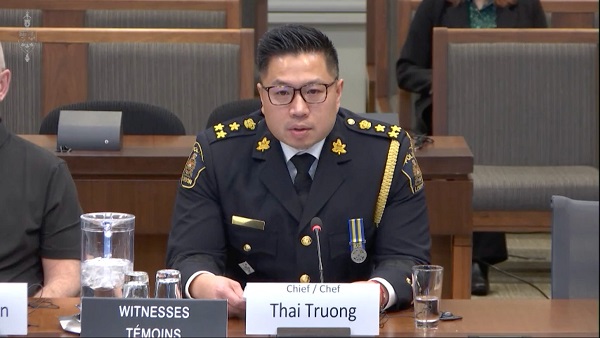
 Addictions2 days ago
Addictions2 days agoLondon Police Chief warns parliament about “safer supply” diversion
-
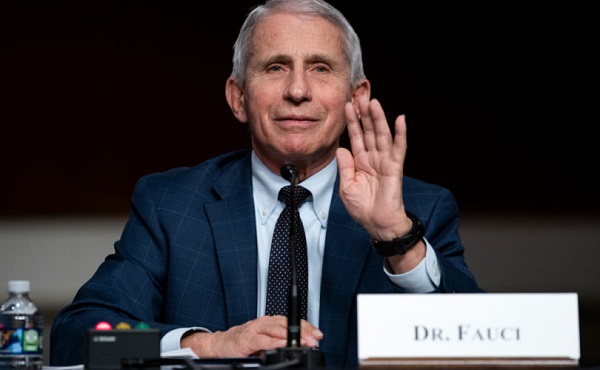
 Health2 days ago
Health2 days agoFauci admitted to RFK Jr. that none of 72 mandatory vaccines for children has ever been safety tested
-

 Daily Caller2 days ago
Daily Caller2 days ago‘Dark Day’: Another Western Country Backs Doctor-Assisted Suicide, Opens Door To ‘Murder Of Old And Sick’



